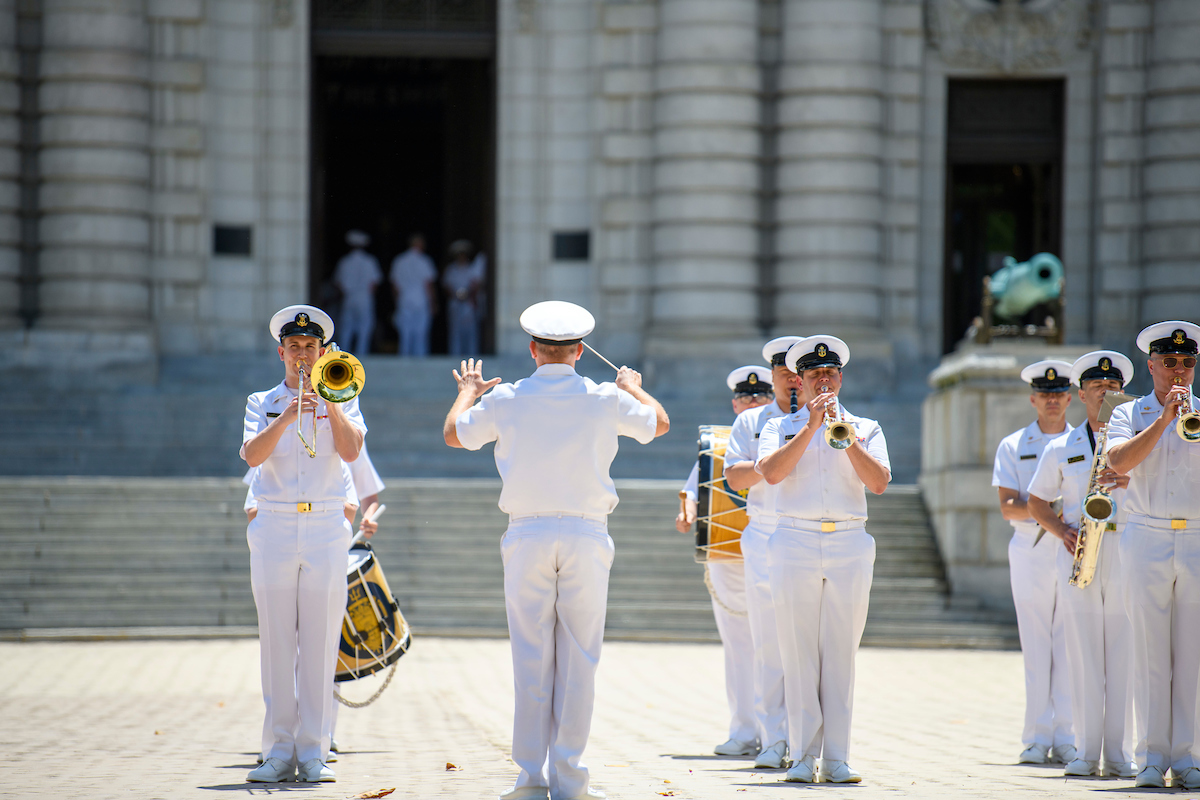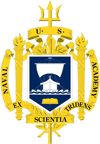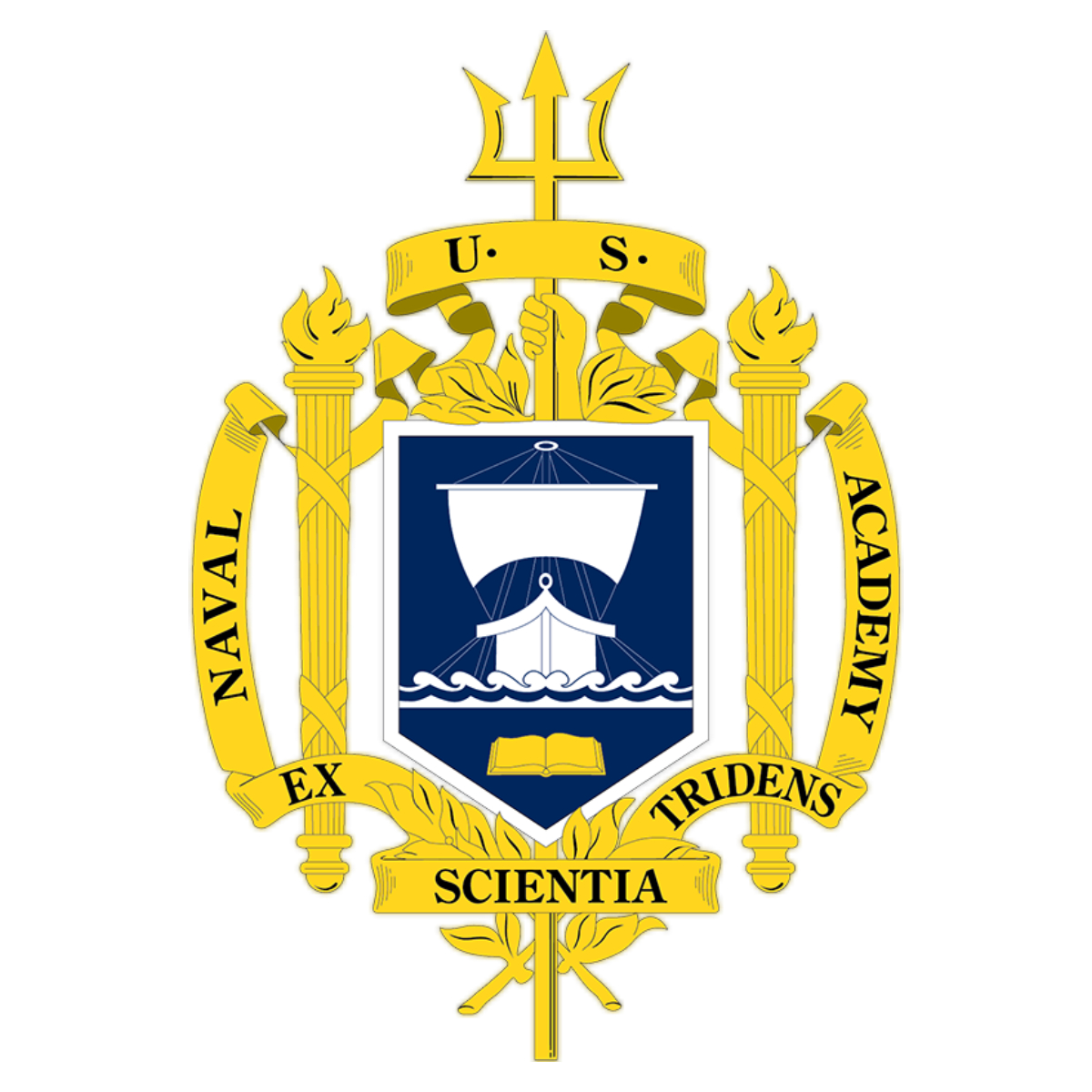
Visitors to the Naval Academy may have noticed an intricate design cut into the stone above the entrance to Bancroft Hall. The same design can also be found cast in bronze and embedded into the sidewalk near the figurehead of Tecumseh. This is the seal and coat-of-arms representing the United States Naval Academy.
Depicting heraldic achievement, a coat-of-arms was historically placed on shields and worn on the outer garments of knights and other noblemen in Western Europe. This custom began in the Middle Ages. The coat-of-arms signified individuals who could lawfully bear arms. As the right to bear arms was a heritable right, one of the constant elements included within a coat-of-arms was the family crest.
While there has never been an authority to regulate what comprises a coat-of-arms, strict adherence to tradition has maintained consistency throughout the centuries. The seal of the United States Naval Academy follows the conventional elements in a coat-of-arms. The major elements within the design consist of a shield, supporters, crest, and motto.
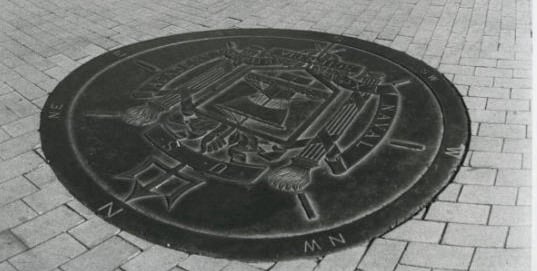
At the top of the coat-of-arms design is the crest, composed of a hand grasping a trident. In the center is the shield. On the shield is an ancient galley ship coming into action. Below the ship is an open book, representing education. Beneath the shield is the motto on a banner, stating “Ex Scientia Tridens,” Latin for “From Knowledge, Seapower.” The supporters to each side of the shield are two stately, columnar structures, topped and flanked by banners stating “US” at the top, “Naval” on the left, and “Academy” on the right. The seal is raised in gold, with blue lettering and blue seas beneath the ancient galley ship on the shield.
Naval Academy Class of 1867 graduate, Park Benjamin, designed the Academy’s coat-of-arms. Inspired by the coat-of-arms used as decoration during the construction of the University Club in New York, Benjamin discovered that the Naval Academy had no official seal. After drafting several options, he presented them to Academy alumni who were also University Club members. The seal was submitted to the Department of the Navy and officially adopted on January 25, 1899.
The seal of the Naval Academy has been featured on every class ring since 1906. First class (senior) Midshipmen traditionally wear the ring with the seal facing outward and the crest, unique to his or her class, facing inward. Upon graduation, the ring is reversed so that the seal faces inward, the position closest to the heart.
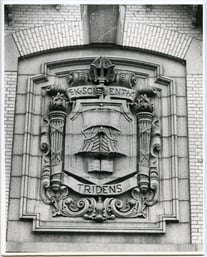
While once used to identify individuals and families, the modern-day equivalent to a coat-of-arms or seal is a brand or corporate logo. The Naval Academy seal can now be found elsewhere around the Yard, as the main element of the Academy flag, and on a variety of merchandise, such as tie tacks, drinkware, clothing, and pre-printed paper goods available for purchase at the official online store of the US Naval Academy, Navyonline.com. One hundred percent of the proceeds from your purchases go back to support the Brigade of Midshipmen.


